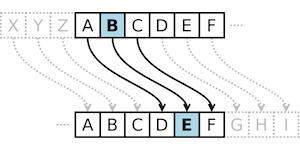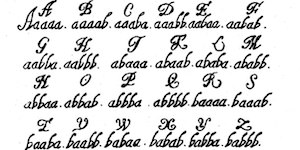Atbash cipher

The Atbash cipher is a straightforward and ancient method of encryption that falls under the category of substitution ciphers. It's a type of cipher that has been employed throughout history and is often considered one of the simplest methods of encoding text. This article explores the Atbash cipher, its origins, applications, and the algorithm it uses for encryption and decryption.
What is the Atbash Cipher?
The Atbash cipher is a substitution cipher primarily used for alphabetic scripts. In this encryption technique, each letter of the alphabet is replaced by another letter in such a way that the first letter is replaced by the last, the second letter is replaced by the second-to-last, and so on. Essentially, it's a mirror image of the alphabet, where 'A' becomes 'Z,' 'B' becomes 'Y,' 'C' becomes 'X,' and so forth.
Historical Significance
The Atbash cipher has historical significance and is one of the oldest known encryption methods. It can be traced back to ancient Hebrew texts, where it was used to encrypt specific words or phrases. In its original form, Atbash was employed as a simple substitution for the Hebrew alphabet.
Applications
- Historical Texts: The Atbash cipher was used in various ancient texts, and it is an interesting aspect of cryptography in historical contexts.
- Educational Purposes: The Atbash cipher is often used to teach the principles of cryptography, as it's uncomplicated and serves as a good starting point for beginners.
- Recreational Puzzles: Atbash ciphers are frequently found in puzzle books and games as a form of entertainment and mental exercise.
Algorithm of the Atbash Cipher
The Atbash cipher works according to a straightforward algorithm. For each letter in the plaintext:
- Identify the position of the letter in the alphabet (e.g., 'A' is 1, 'B' is 2, and 'Z' is 26).
- Calculate the new position by subtracting the identified position from 27 (the total number of letters in the English alphabet).
- Replace the letter with the one located at the calculated position.
Example:
- Original text: "HELLO"
- Conversion:
- 'H' (8th letter) becomes 'S' (19th letter)
- 'E' (5th letter) becomes 'V' (22nd letter)
- 'L' (12th letter) becomes 'O' (15th letter)
- 'L' (12th letter) becomes 'O' (15th letter)
- 'O' (15th letter) becomes 'L' (12th letter)
- Encrypted text: "SVOOL"
Conclusion
The Atbash cipher is a basic yet intriguing encryption method that has left its mark on history. While it is no longer used for secure communication due to its simplicity, it continues to be appreciated for its historical relevance and its role in introducing individuals to the world of cryptography. It is an excellent educational tool and a reminder of the fascinating history of code and ciphers.
Comments on the service

Caesar shift is a type of cipher in which each character is replaced by a character shifted by a certain number in the alphabet.
Go to calculation
A two-letter binary cipher in which alphabet letters are replaced by symbols 'A' and 'B' based on binary coding rules and principles.
Go to calculation
A1Z26 is a simple method of encrypting text in which each letter of the alphabet is assigned a specific number, determined by its number.
Go to calculation